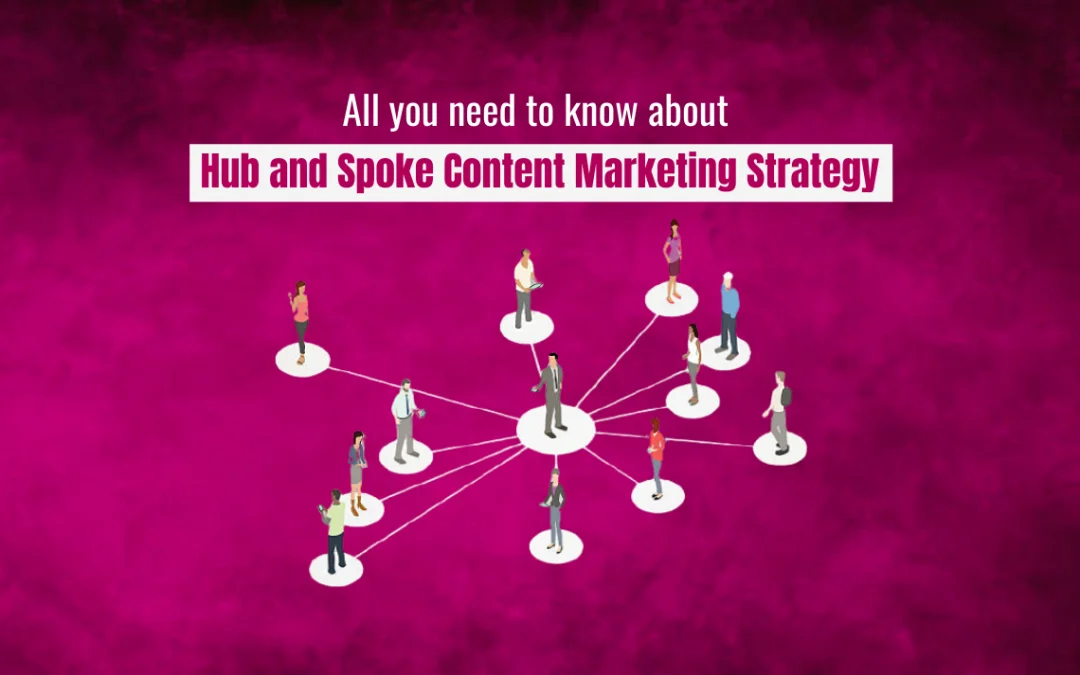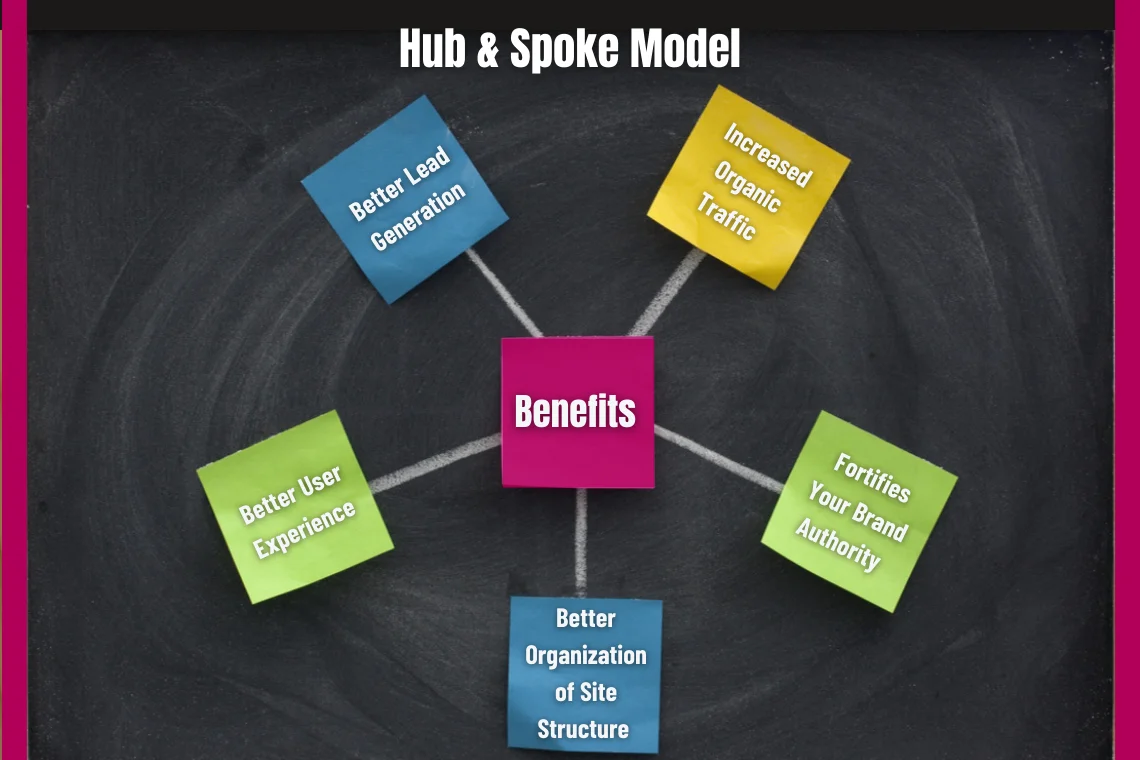
All you need to know about Hub and Spoke Content Marketing Strategy
Content marketing is a powerful Search Engine Optimization (SEO) strategy that allows a website to rank higher on the Search Engine Results Page (SERP). Powerful and engaging content can captivate, engross and retain your target audience while building a powerful brand image and authority for the business. Quality content makes the customers more informed and helps them take learned decisions to choose a brand. Hence, targeting the specific audience with the right content should be the mantra for success for any business.
What is the Hub and Spoke content model?
Hub and Spoke is a content marketing model that is devised to create focussed content around a large topic, which in turn leads to an increase in organic traffic, keywords, rankings, etc, indirectly contributing to generating marketing leads and sales conversions. The model helps you build hub pages and spoke pages, which work in tandem with one another and make your website tick in Google’s algorithm, eventually increasing your SERP.
What is Hub and Spoke marketing and why is it important for SEO and content marketing?
This model is synonymously known as the topic clusters model. The hub pages focus more on a generic topic of higher relevance and builds content around it. The Spoke pages create content that would supplement and complement the hub pages. The Hub pages will target the short-tail and focal keywords, whereas the long-tail keywords are addressed in the spoke pages. The internal linking and URL structuring will further enhance the user experience by giving the visitors powerful and commanding content, exhibiting your authority around your area of expertise.
The benefits of implementing the Hub and Spoke Model will be:

- Increasing organic traffic to your website
- Fortifies your brand authority
- The model organizes your entire site structure, helping in SEO and user experience alike
- This model is going to be a crucial factor for lead generation and in keeping your sales pipeline healthy.
How to build a Hub and spoke model and how does it work?
Now that we have understood the model, you may be wondering how to get started? Let’s uncover now.
The first step would be to do Keywords research. After defining the target audience, deep dive into uncovering the most relevant and sought-after keywords by your end-users. You will arrive at the short-tail and long-tail keywords.
The next step will be to organize the keywords into hubs and spokes pages. Focus on what the users will type in google that will lead to you. Target the most crucial keywords and build compelling and focused content around that.
Once done, focus on URL structuring in such a way that internal linkings are judiciously utilized to give a clear picture to the visitor as to what you have to offer them. Next, you need to focus on creating fresh, attractive and informative content for your audience. The Quality of content pays off if proper time and resources are implemented in deriving at the same.
This model helps you evaluate the success of individual webpages that are driving more organic traffic to themselves. The constant evaluation will help you strategize better and build on a successful model by weeding out irrelevant content.
Conclusion
The Digital market space is driven by multifolds of content. A good Hub and Spoke content marketing strategy will steer you through the competitive web of challenges. You will establish yourself as a Unique, value-driven and customer-focused organization.
If you are concerned about your website’s SEO or rankings, check out our SEO Strategy Services and Content Writing Services. Our leading digital marketing agency is a one-stop solution for your multiple problems. Contact us today to get a quote on our SEO Services and Content Writing Services.

Anitha Ramachandruni
About The Author…
Anitha Ramachandruni, is an MBA graduate having rich experience in the field of Digital Marketing.
She is passionate about writing and has been exploring the content writing field with her specific insights on Digital Marketing. She has hands-on experience working with many clients and adding more value to their brands. She is also an avid reader and likes to keep herself updated with the latest technologies in the world.



